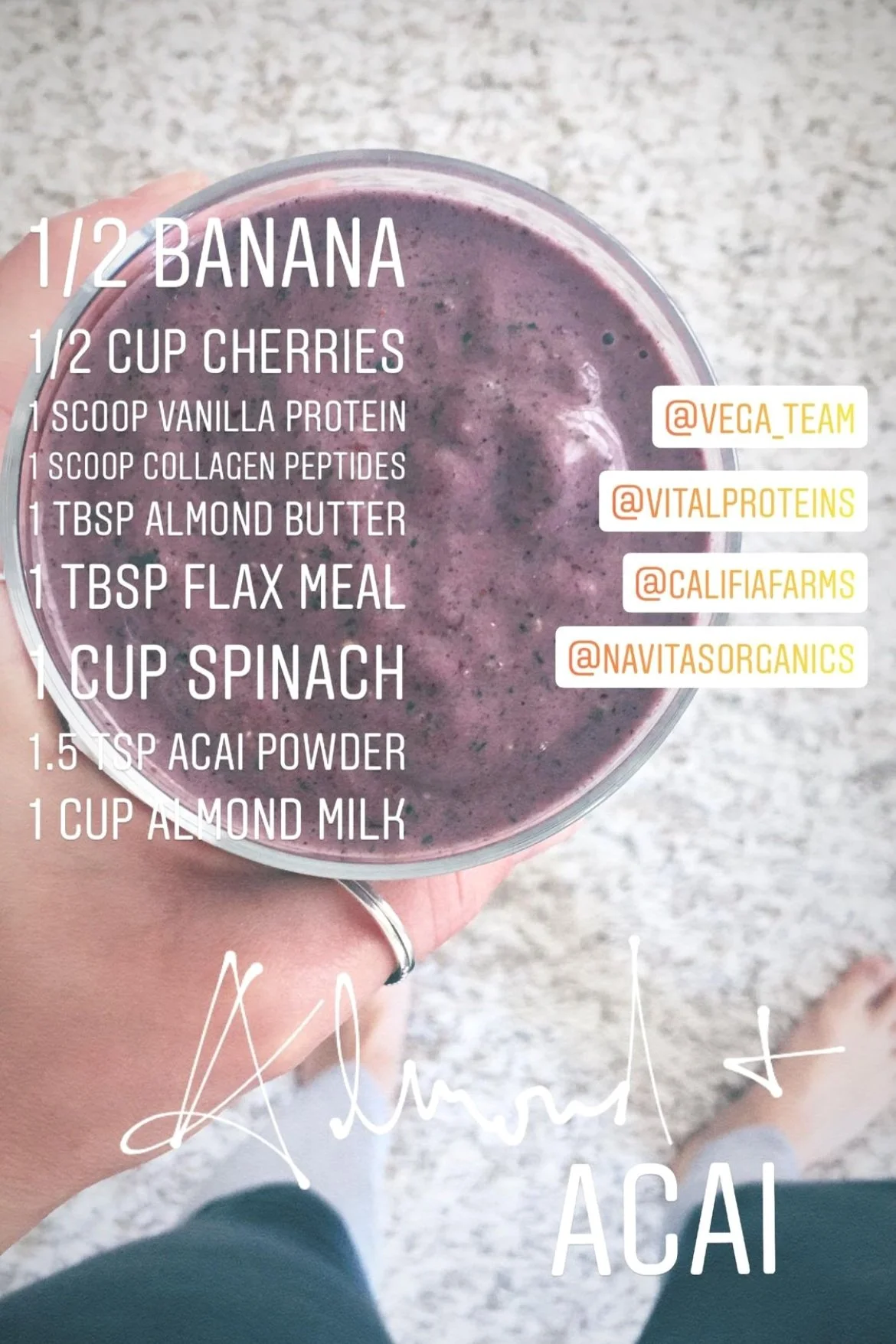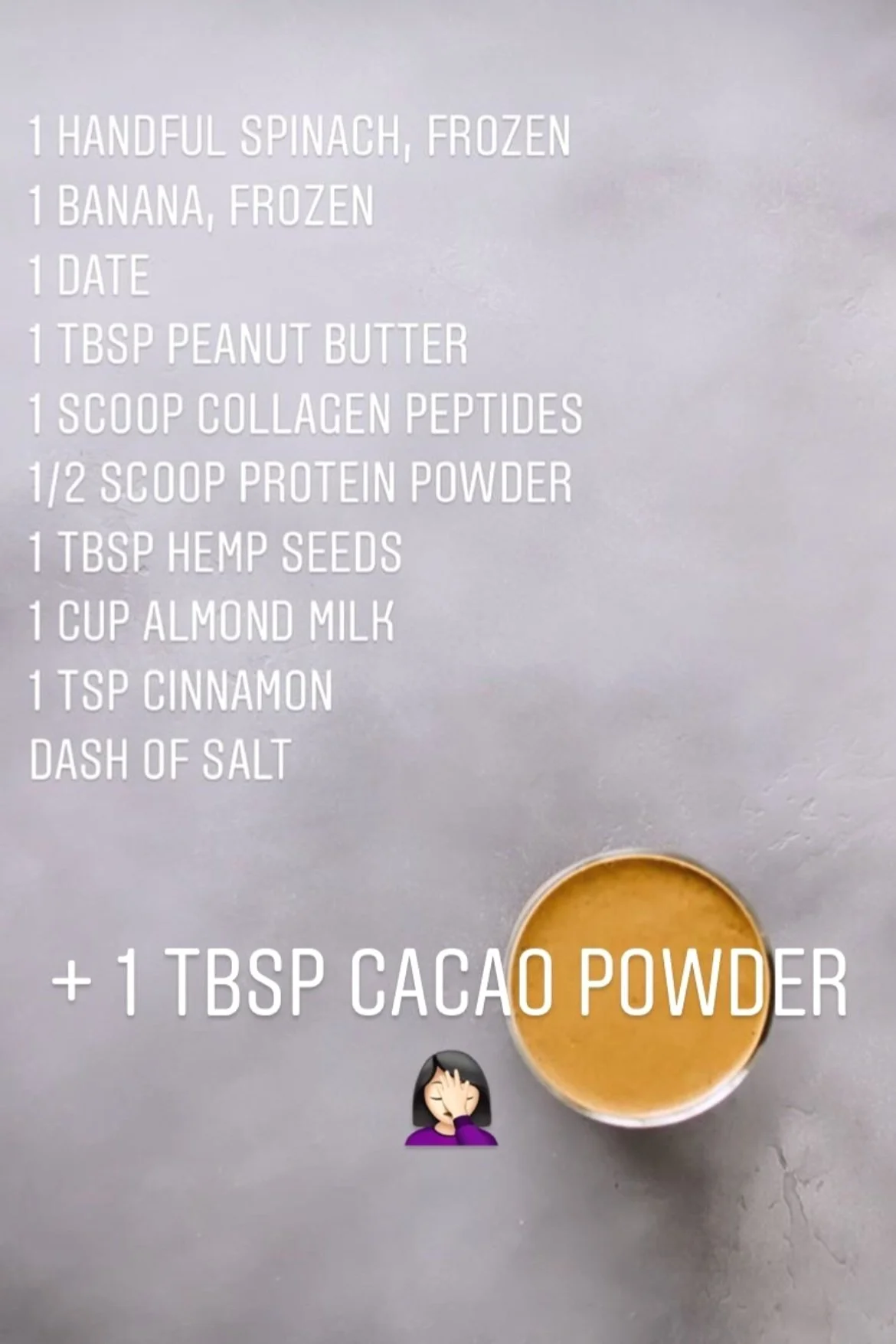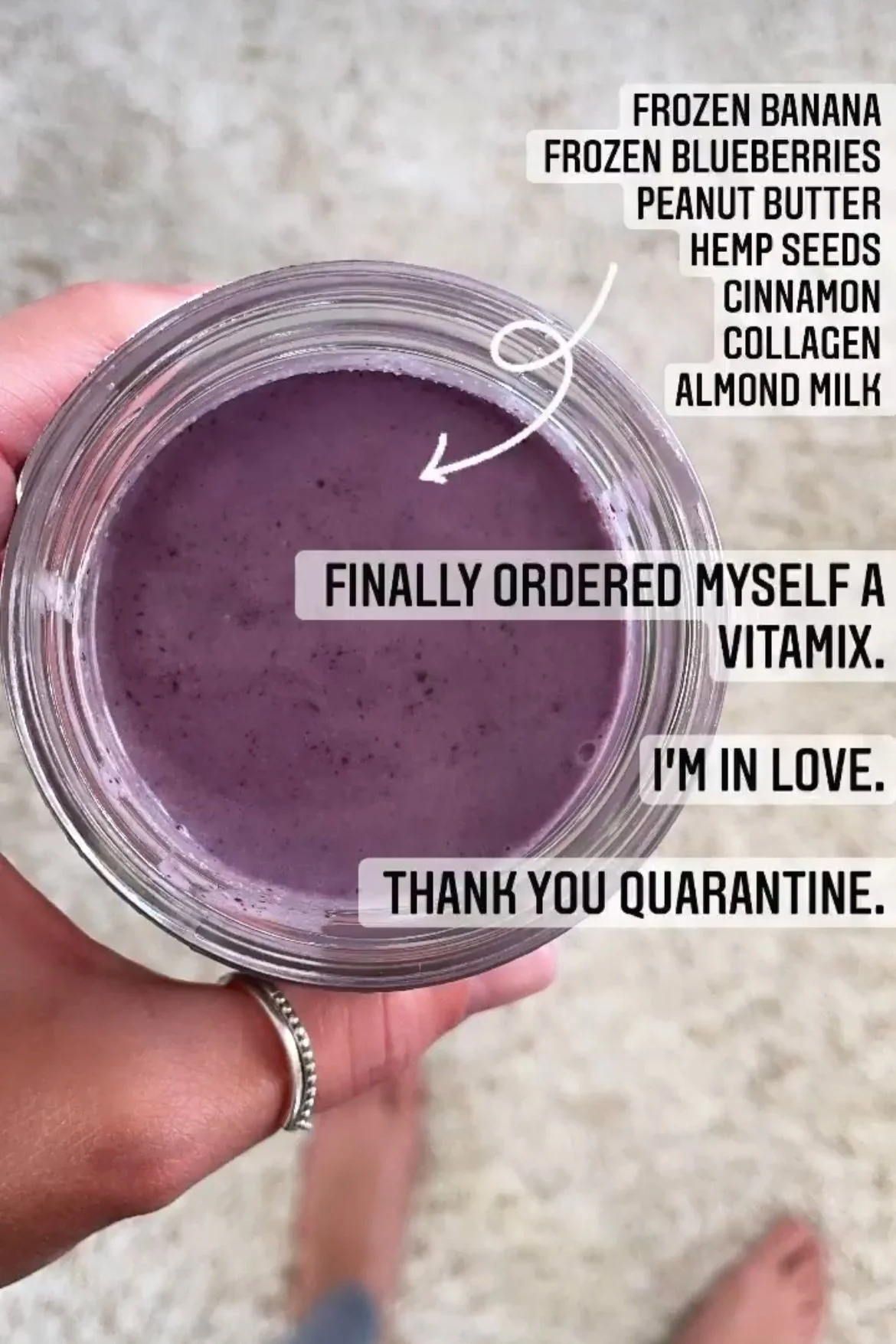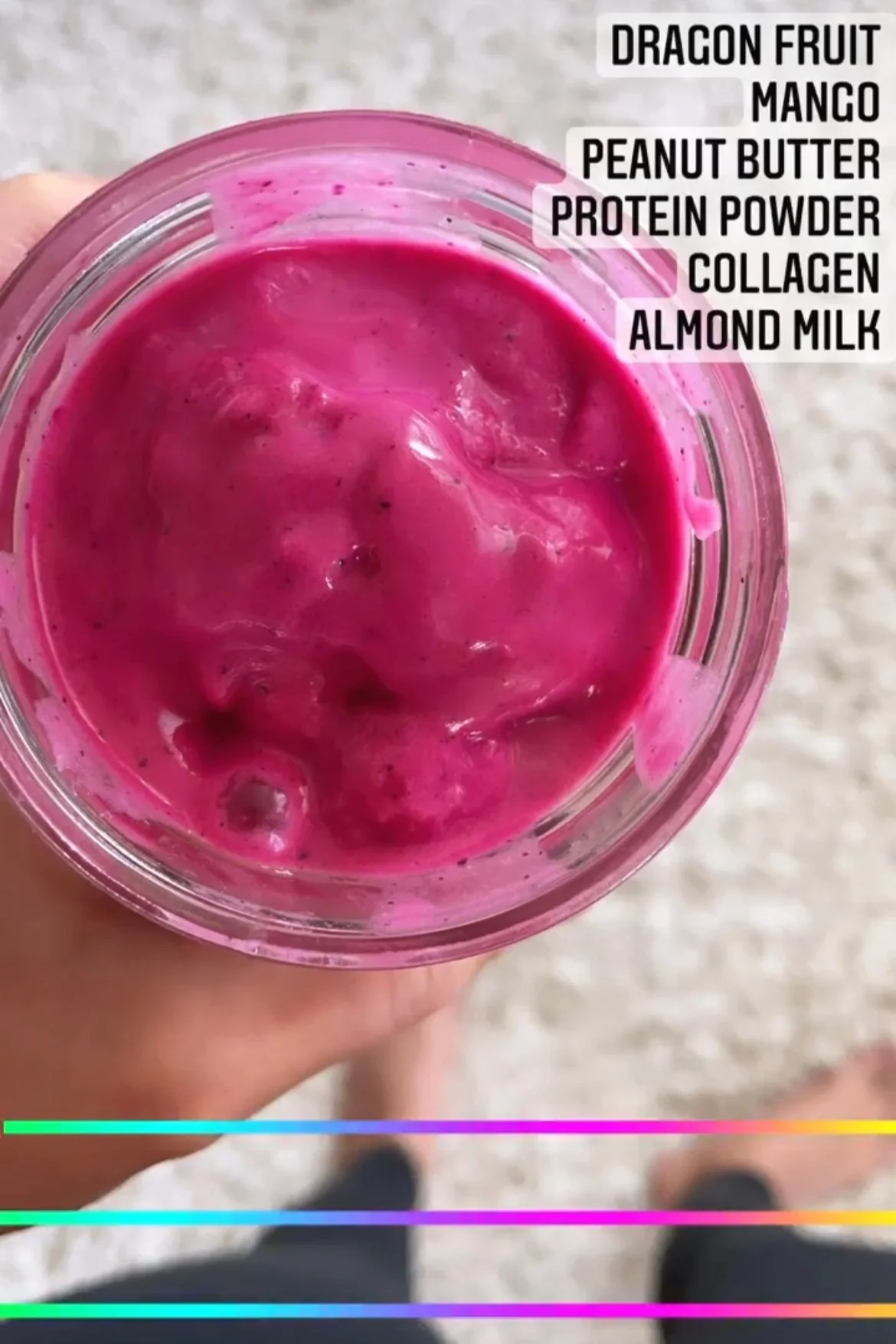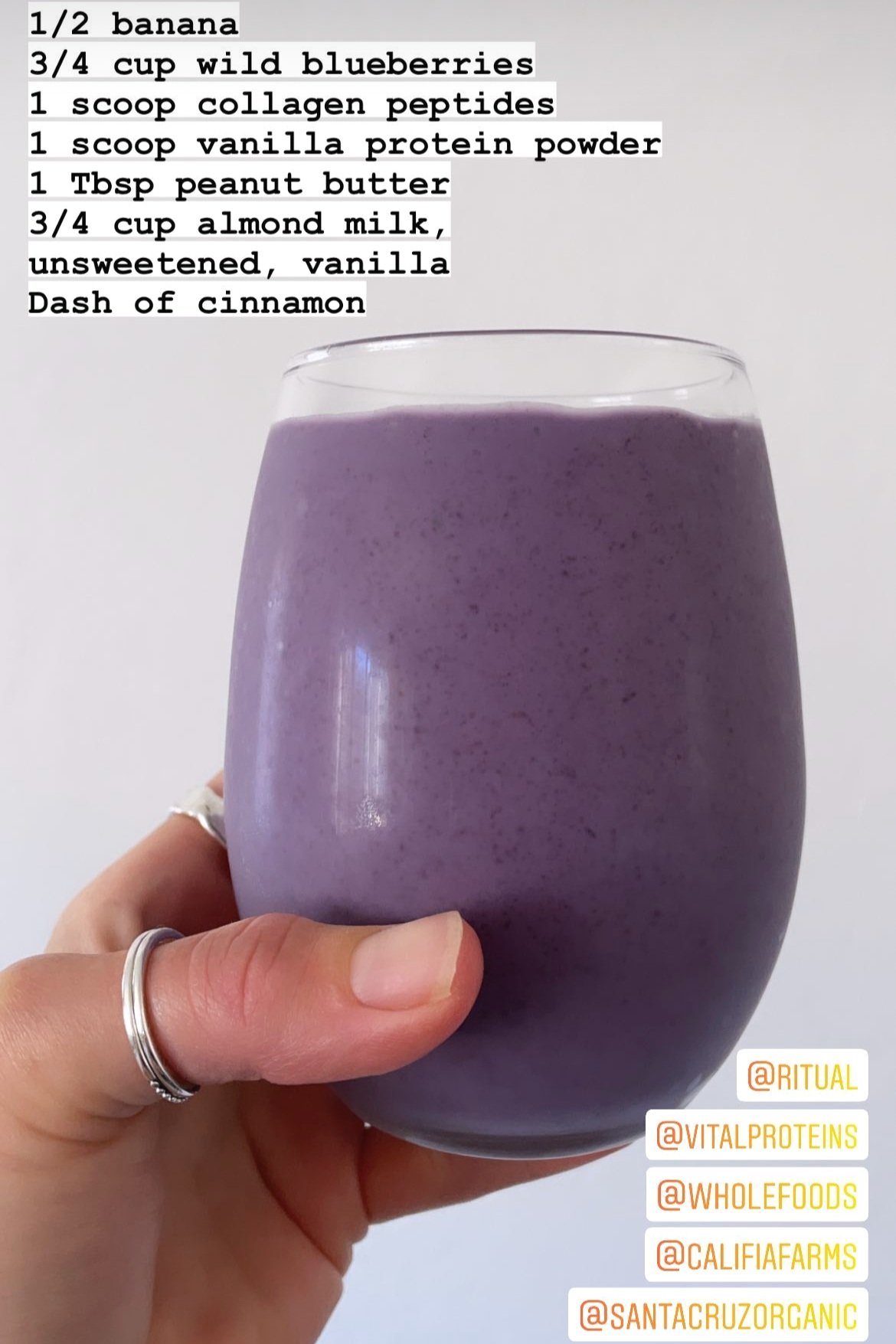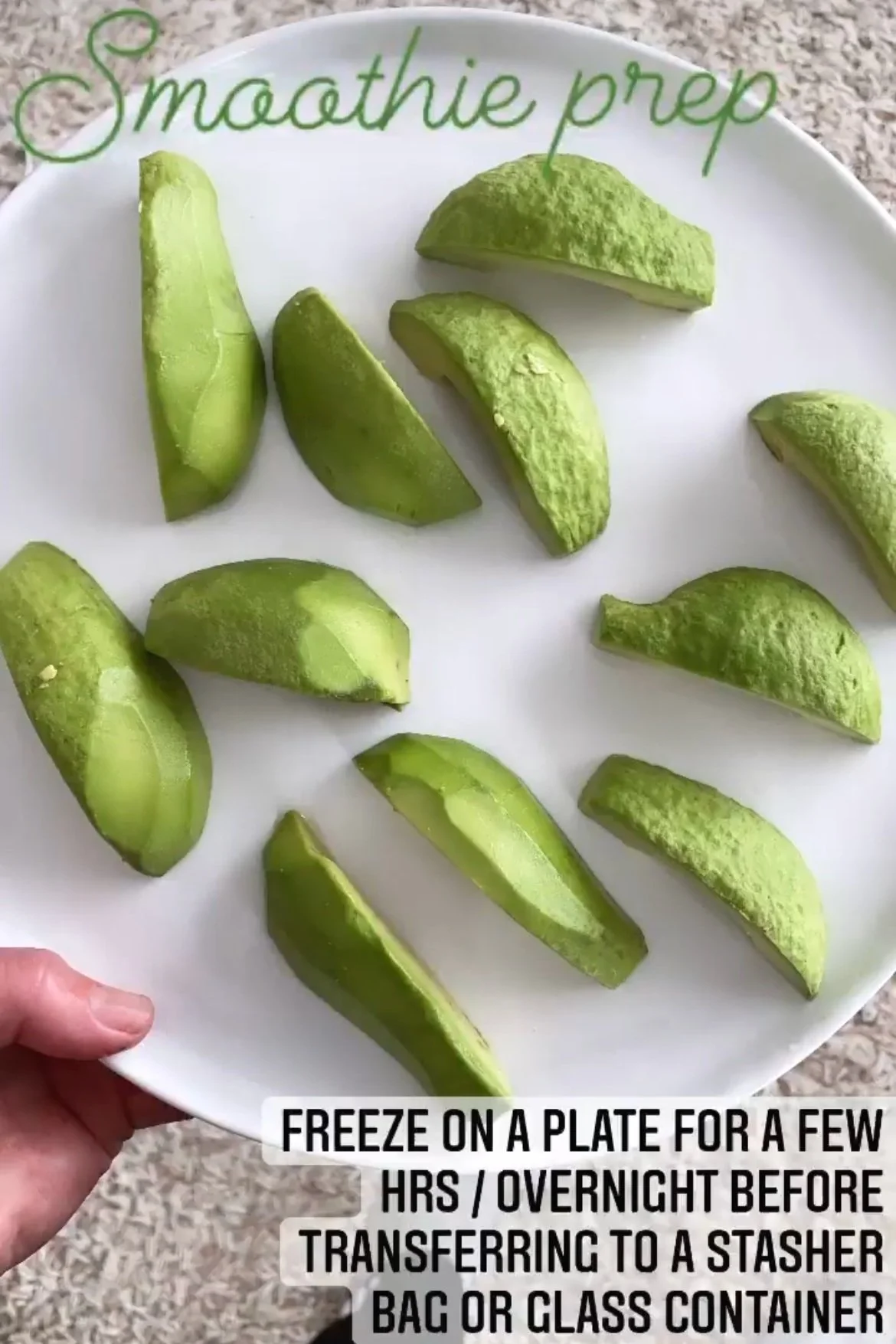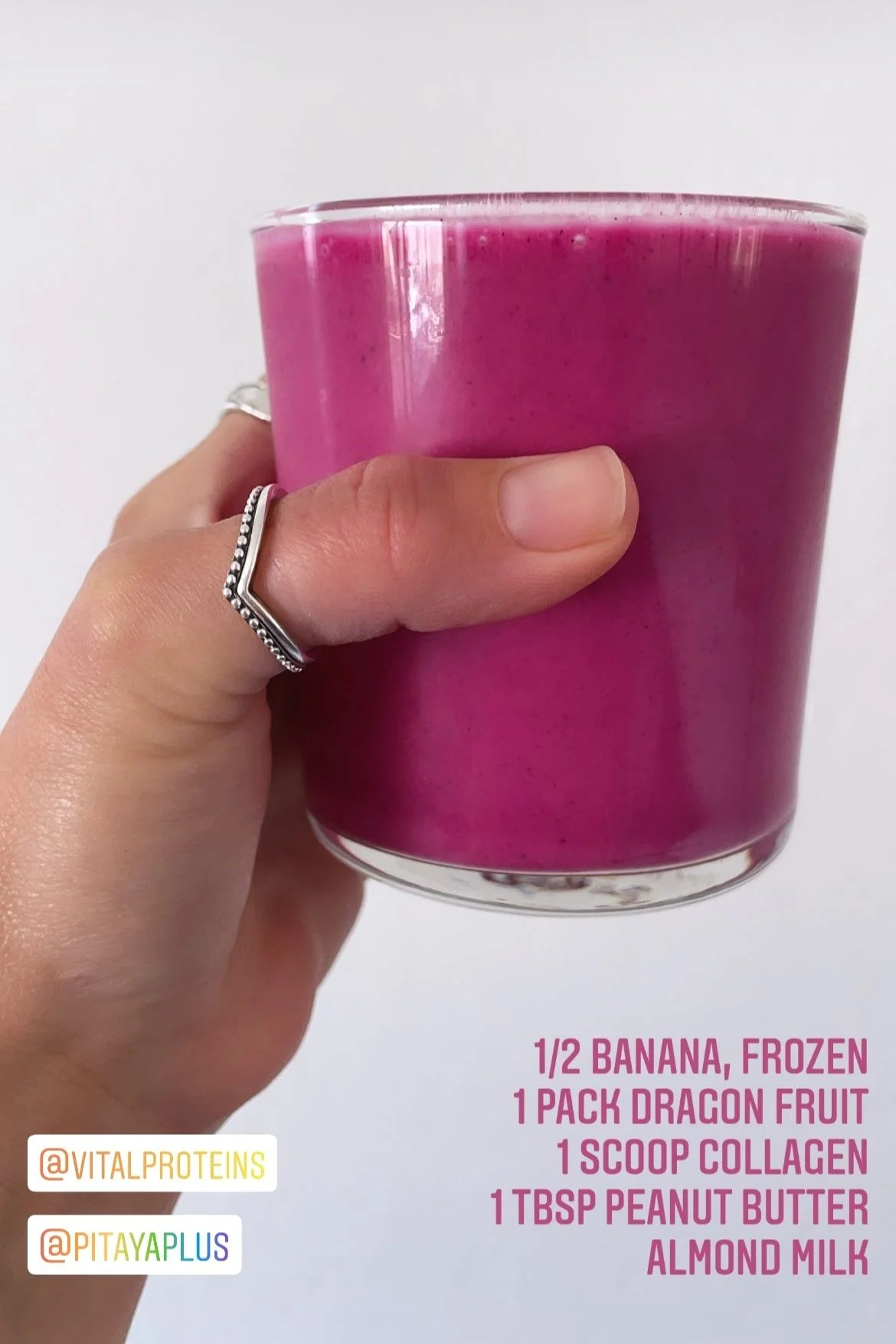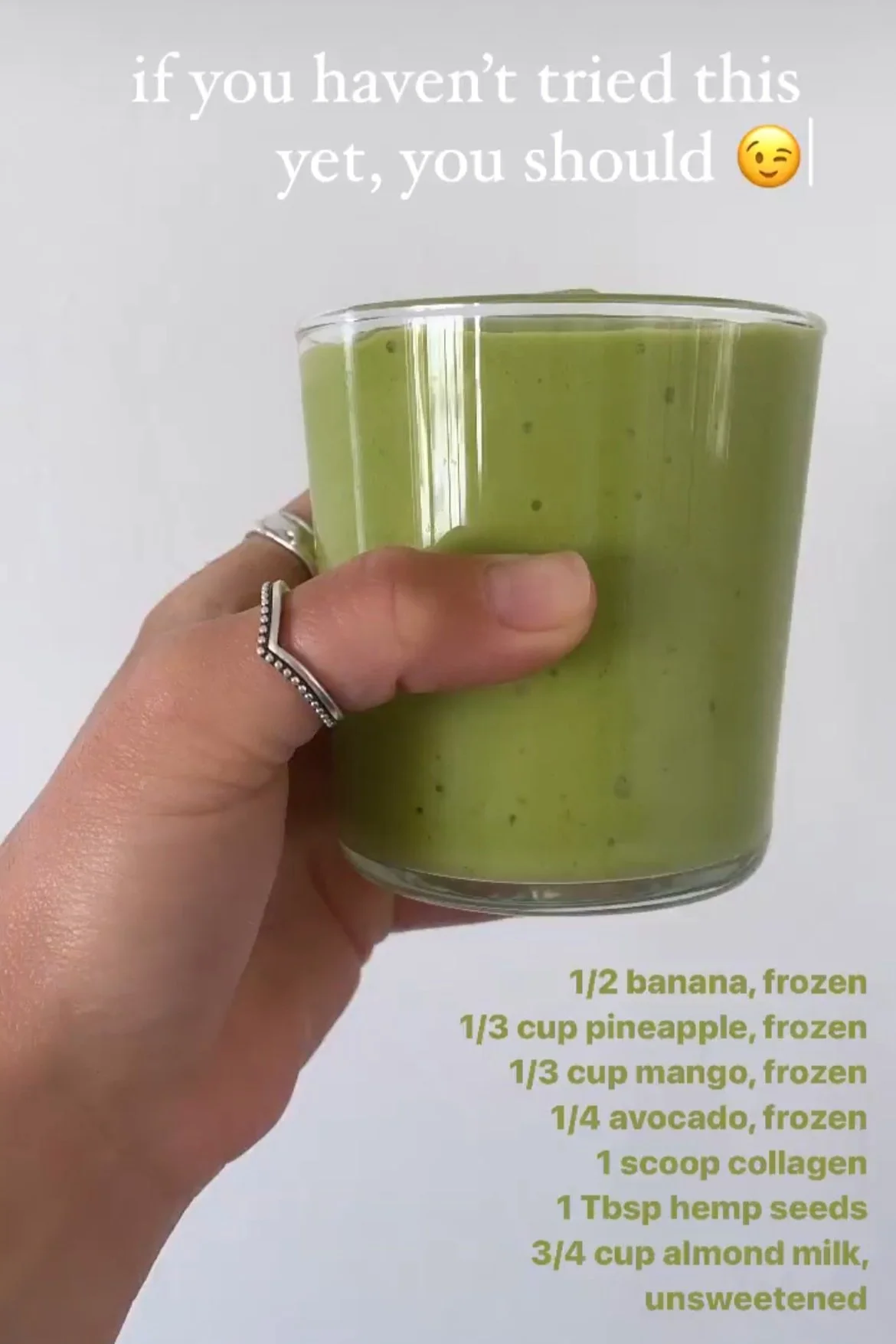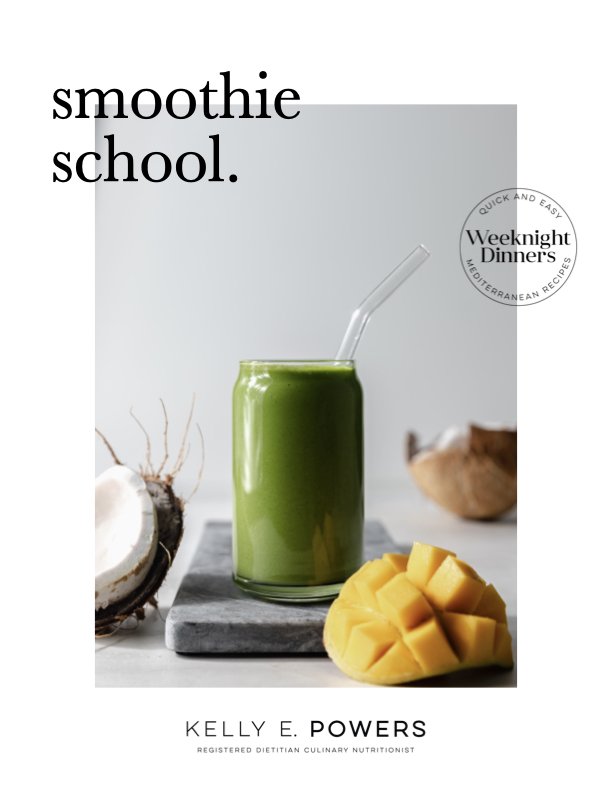how to build the perfect smoothie
Been on Instagram in the past year? I bet you’ve seen 100’s of them — likely 1,000’s. Smoothies. Or smoothie bowls if you’re current on trends.
Why have these colorful, gram-worthy beverages taken the digital world by storm? Well, if you’ve seen any of the posts, you know — they’re beautiful. They’re also a vessel for endless combinations of flavors and nutrients as they can be high in fiber, protein, vitamins, and minerals. When done right, they’re satiating and delicious.
They’re also very versatile — great as a morning meal, for a mid-day snack, or to replenish post-workout. Make a few simple adjustments and you have everything you need in one smooth, refreshing beverage. Just like you often wear many hats in life, smoothies can serve many purposes; think of them as your new secret weapon.
You just need to get a staple recipe down — and, trust me, it’s simple.
Follow these 6 steps and you’ll be blending up your own combinations in no time:
Start with a base
I use frozen bananas (½ banana per serving). They give the smoothie a creamy texture. When you meal prep, peel enough for the week (I do 7 — one a day), break them in half and freeze them on a plate overnight. Place them in a ziplock bag the next morning (this way they won’t stick together).
You can also add cauliflower, zucchini, or cucumber.
Add frozen fruit
Generally 1 cup. You can do a blend of fruit or all one kind.
Some great options are below:
Wild blueberry
Pineapple and mango
Peach
Strawberry and acai
Mixed berry (strawberry, blueberry, blackberry, raspberry)
Cherry and raspberry
Throw in some greens
A handful or two of spinach or kale.
Add your powders and seeds
1 scoop collagen peptides (vital proteins is a great brand).
1 scoop protein powder (ritual and four sigmatic are great options).
1-2 Tbsp cacao powder (if you want chocolate; navitas organics is a great choice).
1 Tbsp hemp seeds or 1 Tbsp chia seeds or 1 Tbsp flax meal (again, navitas organics is a good option).
Add a healthy fat
¼ an avocado (frozen or fresh) or 1 Tbsp nut butter (peanut, almond, or cashew; shopping tip: opt for one that’s free of added oils and sugars) or 1 Tbsp tahini.
Finish with liquid
About 1-1 ½ cups.
Start with a cup and add more as needed.
My favorite is ½ cup cashew or almond milk and ½ cup coconut water (no sugar added and not from concentrate; harmless harvest is a great brand).
You can make smoothies for two by roughly doubling everything above. Just like any other recipe, taste as you go. If it needs a little more cacao or nut butter, add it. You’re not baking here — you don’t have to be precise. Play around a bit and enjoy!
Ready to blend up your own delicious and nutritious smoothies?
Smoothie School is here — get your copy now!
Why those ingredients?
Fruit and vegetables
As you know, fruits and vegetables provide your body with essential vitamins and minerals. They’re also a great source of fiber, helping to balance blood sugar levels and aid in digestion.
Powders and seeds
Collagen peptides — as we age, our bodies naturally produce less collagen. Adding collagen peptides to your diet will help support healthy skin, hair, nails, bones, and joints. It’s also a great way to increase our protein intake.
Protein powder — a great addition to increase satiety and help stabilize blood sugar.
Cacao powder — a nutrient-packed way to get your chocolate fix that’s absent of sugar while being high in fiber, minerals, and flavanols (antioxidants). Tip: add a dash of cinnamon when you use cacao powder.
Hemp seeds — a rare plant-based source of complete protein and omega-3s, these seeds are vital for brain health and everyday functions.
Chia seeds — an excellent source of fiber, omega-3s, and protein, this highly nutritious seed may support strong bones and promote heart health.
Flax meal — high in omega-3s, lignans (antioxidant shown to help reduce cancer risk), and fiber, this nutrient-dense food may improve cholesterol, lower blood pressure, and help control blood sugar. It’s also lower in calories, carbs, and fat than hemp and chia seeds.
Healthy fats
A necessary addition to help your body absorb all the vitamins from the fruits, vegetables, and supplements added. Vitamins A, D, E, and K, which are all necessary for daily function, are fat-soluble vitamins, meaning they require fat to be absorbed. Fat also helps with satiety and hormone regulation, meaning it helps you feel full longer and aids in weight management.
A recipe for you — tropical green smoothie.
Here’s a simple recipe for a tropical green smoothie to get you started. It’s one of my favorites and it’s great post-workout! Serves one.
½ frozen banana
½ cup frozen mango
½ cup frozen pineapple
¼ frozen avocado
2 cups spinach
1 scoop protein powder
1 scoop collagen peptides
1 Tbsp hemp seeds
½ cup milk of choice, unsweetened
½ cup coconut water, unsweetened
Place all ingredients in a blender and puree. Enjoy!
Nutrition information: 436 calories, 50g CHO, 30g PRO, 14g FAT.
Some inspiration for you.
Delivery Format: PDF FileAre you inspired to take your health to the next level? Smoothie School will help you master creating the perfect, balanced smoothie every time. The smoothies in this guide will provide you with an ample amount of energy and nutrients to help power you through your day!
I created this comprehensive smoothie guide because I make very delicious and balanced smoothies. I teach my friends, family, and 1:1 clients how to do the same, and I wanted to put together a resource to share the information with you.
If you’re a foodie interested in improving your smoothie-making skills, then this ebook is for you. If you’re looking for an easy guide to help you incorporate more nutritious smoothies into your daily routine, then this ebook is for you. And if you’re interested in learning more about the nutritional benefits smoothies can provide, then this ebook is for you.
Smoothie School is a done-for-you recipe guide with several resources from navigating the grocery store to prepping ingredients to building balanced smoothies and much more!
INSIDE YOU’LL FIND:a step-by-step smoothie formula
the benefits and nutrient breakdown of smoothies
how to stock your pantry, fridge, and freezer
how and when to create smoothies
different equipment, alternatives, and favorite brands
smoothie prep school
15 quick and healthy smoothie recipes
a week of smoothies, and
a shopping list for Monday - Friday
Frequently Asked Questions
Q: When is the best time of day to drink a smoothie?
A: It really depends on your individual schedule and needs. You can enjoy a smoothie in the morning for a balanced and filling breakfast, in the afternoon for a quick and delicious snack, or after a workout to replenish and repair. Follow the formula above for a complete meal, cut the ingredients in half to reduce the size when having it as a snack, and make sure you add protein and collagen when using it as a supplement post-workout.
Q: What should I add to my smoothie to make it a complete meal?
A: You want to ensure your smoothie has adequate calories and is built with a combination of protein, carbs, and healthy fats. The formula and sample recipe above work as a meal (for those close to or at 1,600 calories a day).
Q: What should I put in my smoothie after a workout?
A: It’s important to have protein post-workout. It’s also important to have carbs and fat, so you still want to build a balanced smoothie. Though most ingredients add some protein, you can ensure you’re getting an adequate amount by adding in collagen peptides and/or protein powder. If you follow a pescetarian diet, use marine collagen and plant-based protein. If you follow a vegetarian or vegan diet, don’t add collagen and use plant-based protein.
Get more recipes and resources — join my substack newsletter!
Paying subscribers receive:
Exclusive recipe drop every Saturday morning
Once monthly one-week meal plan
Nutrition education and resources
Weekly Five Things post
Access to all past recipes on the website
Unpaid subscribers receive a recipe drop once monthly and my weekly Five Things post.
This post was written by Kelly Powers, MA, RDN. Kelly is a Registered Dietitian and Culinary Nutritionist who takes a holistic approach to nutrition and health. She is a recipe developer with a food blog highlighting whole foods, simple recipes, and her life in San Francisco. Kelly is the creator of Weeknight Dinners, a weekly meal plan program that helps users get back in the kitchen and feed themselves well. Kelly specializes in the Mediterranean diet and sustainable behavior change, helping her clients reach their health goals while improving their relationship with food.


